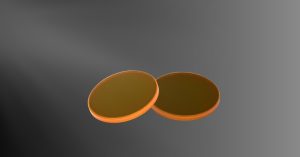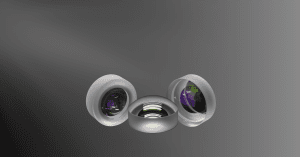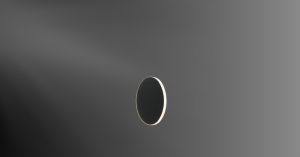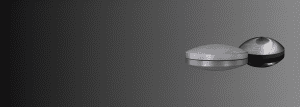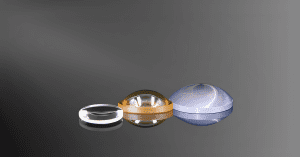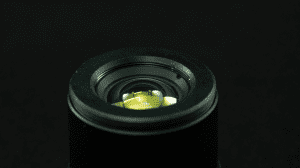Infrared Optics (IR Optics)
Avantier delivers high-performance infrared optics for advanced applications like thermal imaging, spectroscopy, and high-power lasers. We ensure optimal performance across the infrared spectrum with our custom-crafted components.
Diamond-Turned Precision
We utilize diamond turning machines to achieve sub-nanometer surface finishes and sub-micrometer form accuracies. This allows us to produce precise IR lenses, IR windows, and complex assemblies. Our diamond fly cutting machine also enables intricate diffraction gratings for advanced IR optics design.
Diverse Materials & Coatings
Choosing the right material and coating is essential for IR optics performance. We offer a wide selection of IR substrates and anti-reflection (AR) coatings to maximize transmission and durability.
Our Materials Include:
- Zinc Selenide (ZnSe)
- Calcium Fluoride (CaF2)
- Zinc Sulfide (ZnS)
- Fused Silica
- Silicon (Si)
- Germanium (Ge)
- Sapphire
- Magnesium Fluoride (MgF2)
- Chalcogenide Glasses
- Gallium Arsenide (GaAs)



IR Optics Manufacturing Capabilities
Component Types/Materials | Transmission Wavelength (um) | Lenses | Windows | Prisms | Filters | Mirrors |
Zinc Selenide (ZnSe) | 0.5 – 20 | Φ1-500mm | Φ1-500mm | 1-100mm | Φ1-500mm | Φ1-500mm |
Calcium Fluoride (CaF2) | 0.13-10 | Φ1-280mm | Φ1-280mm | 1-100mm | Φ1-280mm | Φ1-280mm |
Zinc Sulfide (ZnS) | 0.4-12 | Φ3-200mm | Φ3-200mm | 10-60mm | Φ3-200mm | Φ3-200mm |
Fused Silica | 0.185-2.1 | Φ1-500mm | Φ1-500mm | 1-300mm | Φ1-500mm | Φ1-500mm |
Silicon (Si) | 1.2 – 8 | Φ1-400mm | Φ1-400mm | 1-100mm | Φ1-400mm | Φ1-400mm |
Germanium (Ge) | 2-14 | Φ3-450mm | Φ3-450mm | – | Φ3-450mm | – |
Sapphire | 0.15-5 | Φ1-300mm | Φ1-300mm | 1-150mm | Φ1-300mm | Φ1-300mm |
Magnesium Fluoride (MgF2) | 0.13-10 | Φ1-200mm | Φ1-200mm | 1-80mm | Φ1-200mm | Φ1-200mm |
Chalcogenide | 1 – 14 *typical.25 *max | Φ1-300mm | Φ1-300mm | – | – | – |
Gallium Arsenide (GaAs) | 0.9-18 | Φ1-150mm | Φ1-150mm | Φ1-60mm | – | – |
BaF2 | 0.15-12.5 | Φ1-280mm | Φ1-280mm | 1-100mm | Φ1-280mm | Φ1-280mm |
KBr、KCl | -25 | – | Φ1-50mm | – | – | – |
LiF | Φ1-100mm | Φ1-100mm | – | – | – |
We provide specialized AR coatings for NIR, MWIR, and LWIR bands.
Applications of Infrared Optics
Infrared optics are essential across a multitude of industries and scientific disciplines. Our custom IR optical solutions are integral to:- High-power CO2 lasers
- Night vision and thermal imaging
- IR imaging
- Spectroscopy
- Defense & Security
- Medical diagnostics
- Industrial sensing
Selecting the Ideal Infrared Optics for Your Needs
The infrared spectrum includes Near-Infrared (NIR), Mid-Wave Infrared (MWIR), and Long-Wave Infrared (LWIR). Consider:- Substrate & AR Coating: Match material and coating to your desired wavelength (e.g., Germanium for MWIR, Sapphire for NIR).
- Thermal Properties: Evaluate index gradient and coefficient of thermal expansion (CTE) for temperature stability.
Avantier Advantages
- Custom AR Coatings: For visible, NIR, SWIR, MWIR, and LWIR.
- Cost-Effective & Reliable: High performance in demanding environments.
- Durable: Resistant to shocks.
- Compliant: ISO and MIL standards met.
- Expert Design Support: We help create your ideal custom IR optics.
Ready to enhance your optical system?
Contact us today to discuss your specific requirements and begin designing your custom IR optics solution. Experience the reliability and quality of Avantier’s infrared optical components for your next project.
WE CAN HELP YOU!
Contact us NOW for sales & expert advice.




